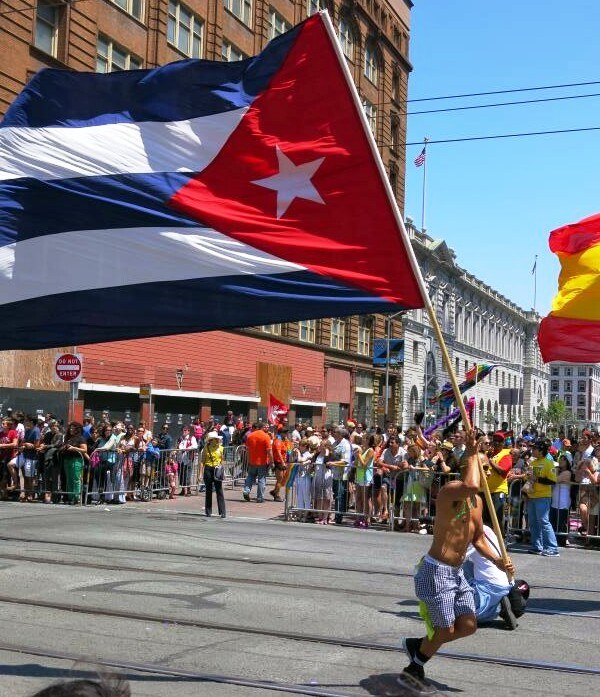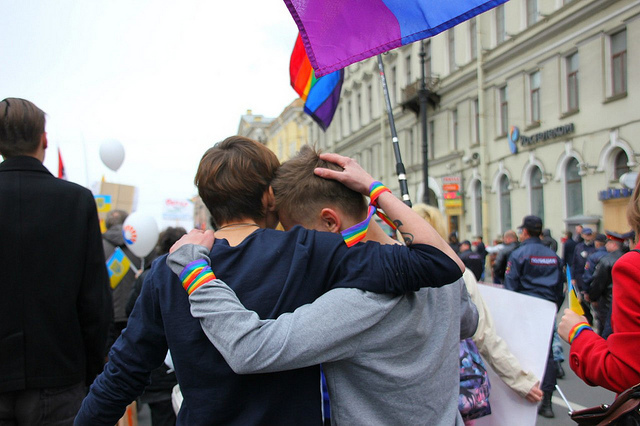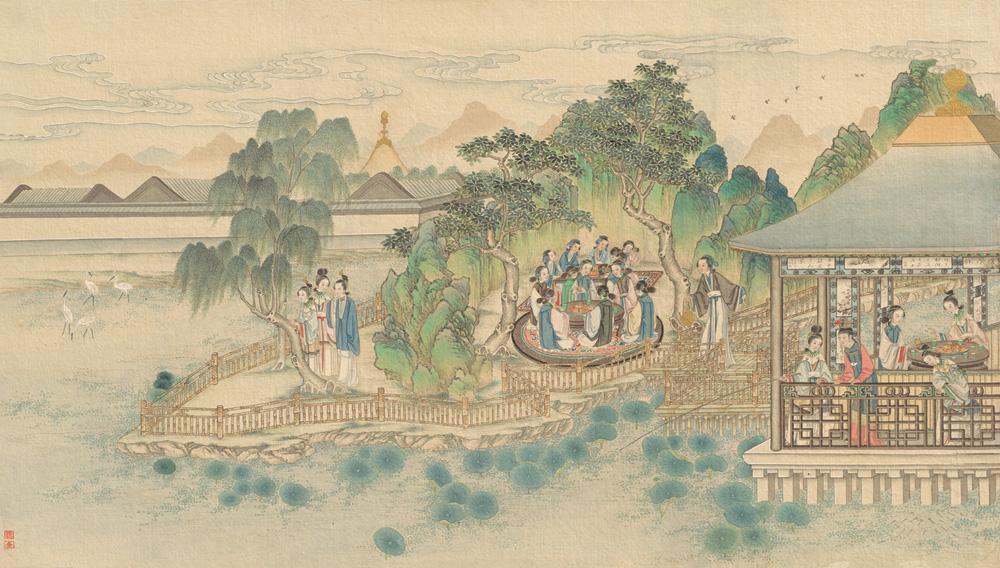9 Classroom-ready Stories of LGBTQ+ Lives Around the World
Posted on June 04, 2019

According to a 2017 study, only one in five LBGTQ student ever sees positive representations of queer life in classroom readings*. This June is the perfect time to remedy this imbalance with relevant, compelling literature that spans the globe and showcases the diversity of LGBTQ lives. You'll find links to that literature, along with tools for teaching and learning, below.
1. From Puerto Rico, the story "Bruises," first published as part of the 2019 Pride issue of the magazine Words Without Borders. We love this story, set in a middle school just before the 1968 moon landing, because it doesn't shy away from complexity but is also firmly rooted in the concrete experiences of its characters, as they tackle bullying, changing friendships, gender expectations, and encounters with the adult world. "There's nothing to give up, Elena. We just are the way we are." As they read, students might mark which characters' stories resonate with them, and then discuss their responses in pairs or small groups. (Includes some anatomical slang.)

WWB Editorial Director Susan Harris provides background on the story in her issue introduction:
Afro-Caribbean writer Yolanda Arroyo Pizarro won the National Short Story Prize of the PEN Club of Puerto Rico in 2013 for her collection Las Negras. Known for exploring the limits of female characters who challenge hierarchies of power, here she traces a relationship that morphs from bullying to bond. Muscular young teen Elena fights her way into a tough boys’ gang as they pummel the effeminate Ricardo. As she navigates often-confusing social and sexual currents, and faces her own crush on the alluring Johana, her relationships with both the gang members and their target evolve.
For contextual resources and teaching ideas, take a look at our blog post "We just are who we are": Teach a Puerto Rican story of identity.
2. From Turkey, "Muzaffer and Bananas," about two boys who skip school to visit the zoo, and discover that their relationship is changing. As the introduction to the story explains, Yalçin Tosun's chubby, despairing Turkish teenagers find solace in visits to the zoo. But an unexpected change to their routine abruptly alters their lives and their relationship.
3. Also from Turkey, graphic non-fiction about the LGBTI community's defiance of the cancellation of a gay pride march.

4. From Japan, "Cavities and Kindness," a sweet, humorous Japanese story about an trans woman dealing with a breakup. See the tabs next to the story for multimedia resources and teaching ideas.

The title character and her friend Úrsula fall in with the seductive sex trafficker Tommy. As they work their way toward the border, Eddy's initial infatuation turns to suspicion and then fear; when Tommy announces a change of itinerary, she stays behind in Tijuana, but cannot persuade the lovestruck Úrsula to do the same. The result is no less tragic for its inevitability.
For context, you might show students the video below, filmed by the not-for-profit organization RAICES (Refugee and Immigrant Center for Education and Legal Services.) A number of the refugees in the video are originally from Honduras, like "Miss Eddy." (The video has a policy slant, disagreeing with the Trump administration's "Stay in Mexico" policy.)
(Watch on YouTube.)
For the story with a happy ending, about a gay Honduran who just won asylum, watch the seven-minute video "Young, Gay and Free from Detention," from the Southern Poverty Law Center (SPLC).
For contextual resources on Mexico and immigration, see the Context and Playlist tabs for "The Gringo Champion."
6. From Russia, "On the Moscow Metro and Being Gay," by the poet and pioneering online publisher Dmitry Kuzmin. This far-ranging and complex essay is probably best for college classrooms. Scholar Julia Trubikhina comments on it, As Kuzmin considers making public statements as an openly gay man his personal responsibility while antigay hysteria in Russia reigns supreme, he nonetheless also envisions a future—and this is a vision of love, a kind of “I have a dream” moment.

See the tabs next to the essay for a video interview, comedian John Oliver's summary of Russia's anti-gay laws, and more.
7. From Iraq, author and animator Mortada Gzar's "While He Was Sitting There," set at a gay bar where a Iraqi student enjoys casual encounters with American soldiers. Like #6, this story is probably best suited for college classrooms.
8. From Japan, "Sentimental Education." This chapter from what translator Allison Markin Powell calls a beautiful lesbian love story set in modern day Japan describes the early life of one of the women in the story: abandoned by her mother, Nachi spends her early years in an orphanage and foster home, becoming "a lot like a stray cat."
9. From China, the oral history, "The Story of a Homosexual: Interview with Ni Dongxue." The interviewer, dissident author Liao Yiwu, is a self-described "chauvinistic" straight man whose discomfort with his subject becomes part of the history. Ni Dongxue is more than prepared to take on this discomfort, with a conversational style that combines provocative humor, thoughtful analysis, and plain statements of fact: "Homosexuality has been around in China for more than two thousand years." (Because of its graphic description of sexual violence, this piece is best-suited to students in eleventh grade and up.)




